February 24 – February 27
Curator: Chloë Courtney
Artists: Oona Bebout and Yinan (Rebecca) Chen
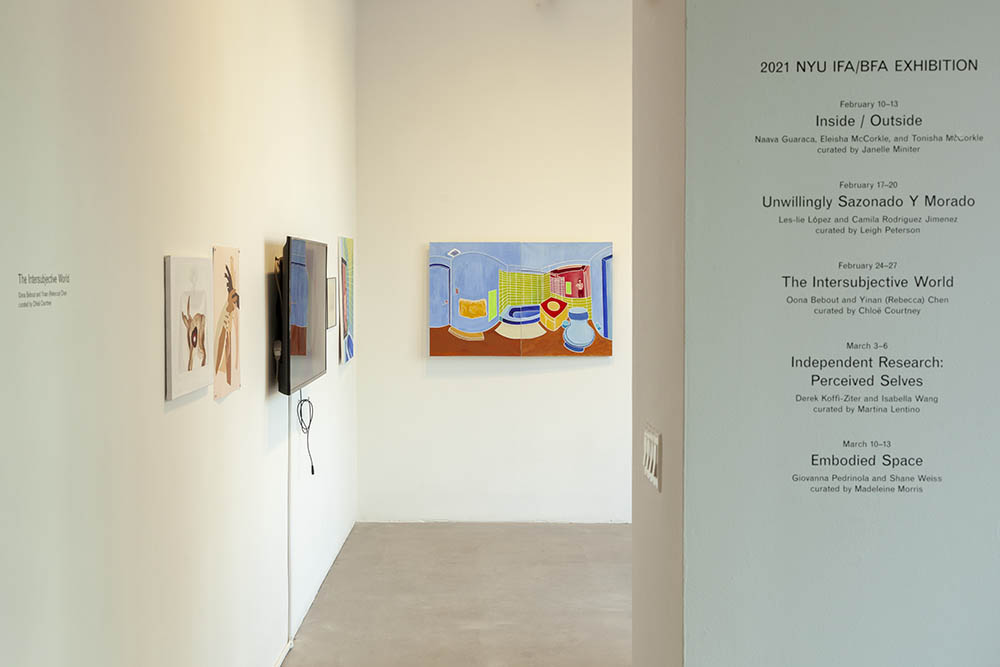
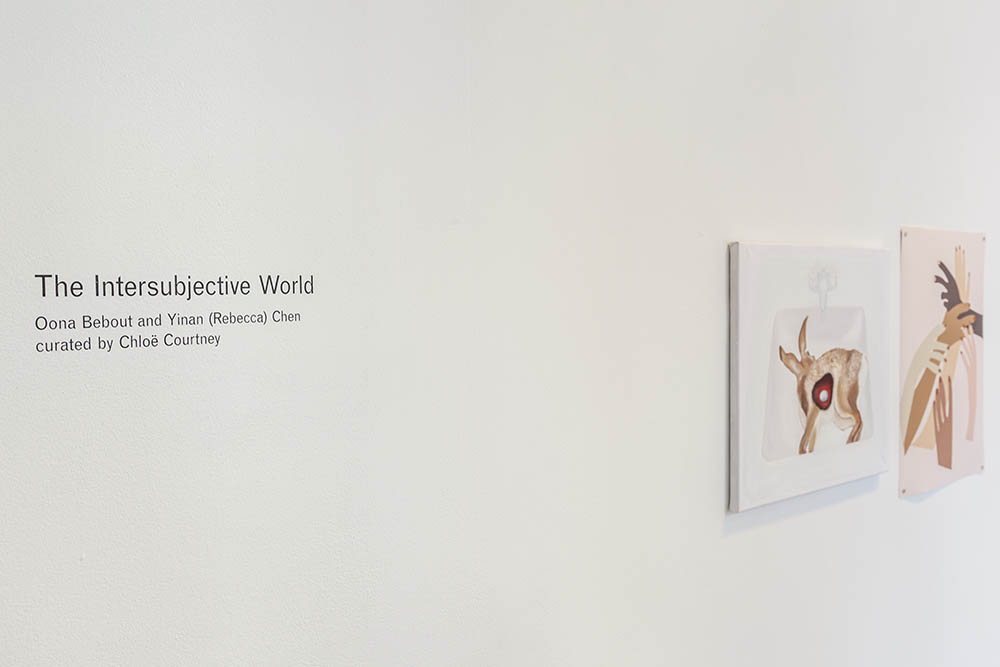
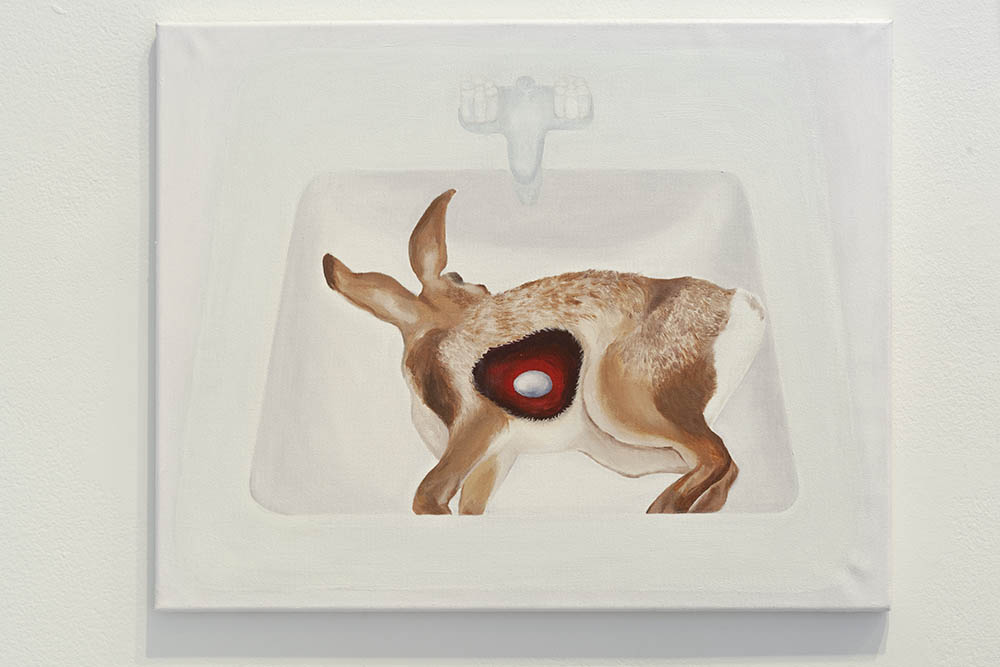
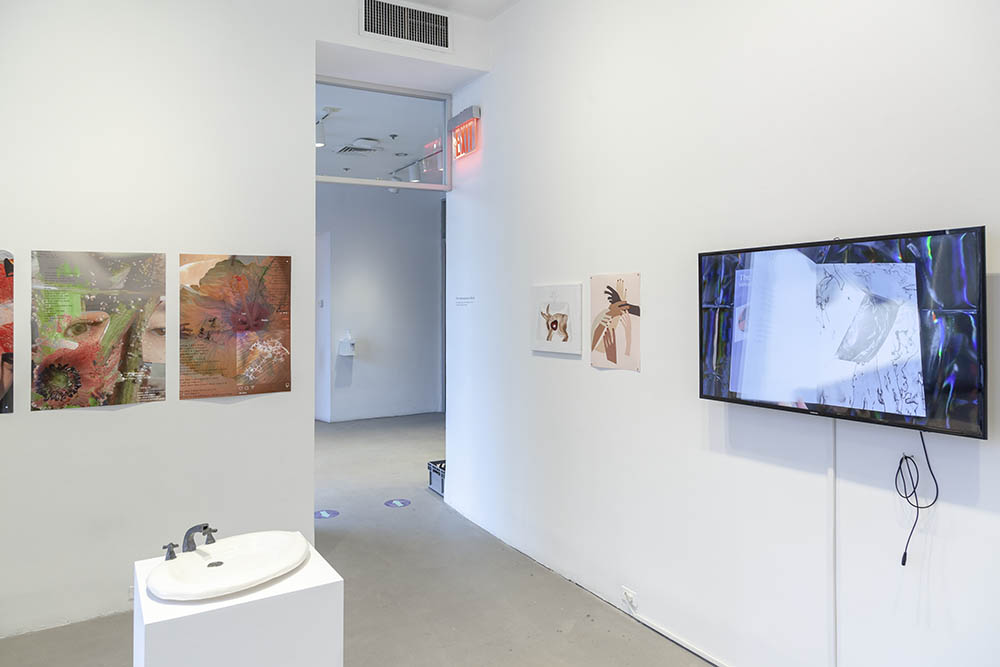
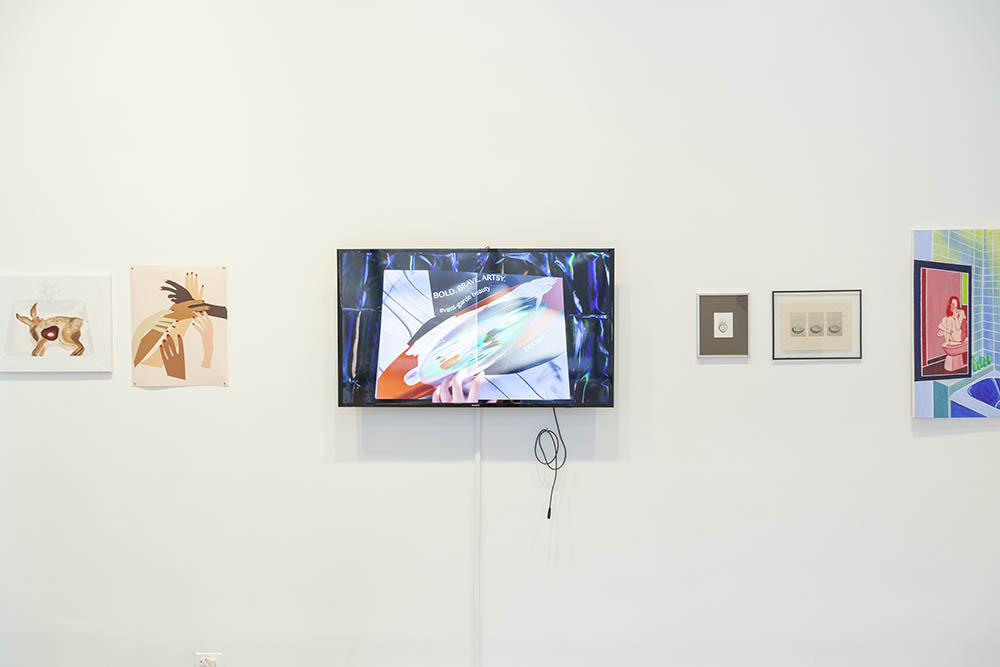
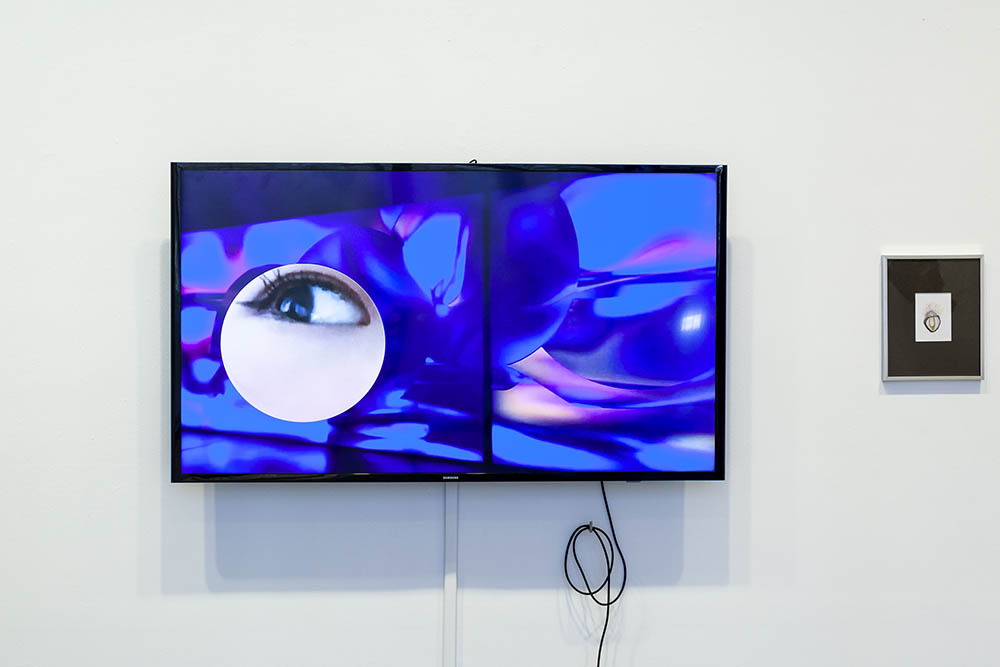
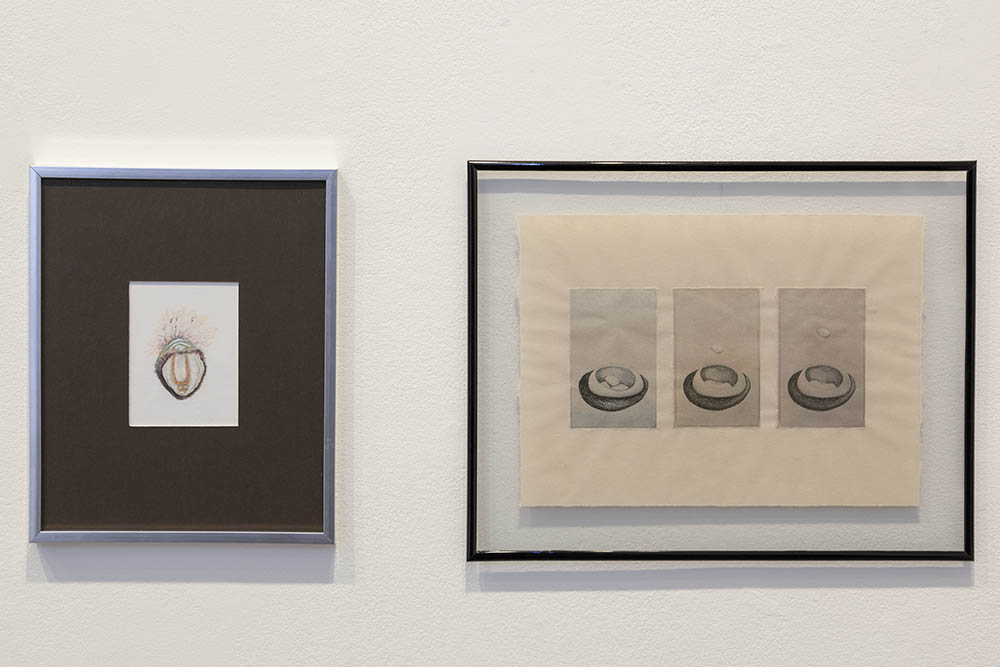
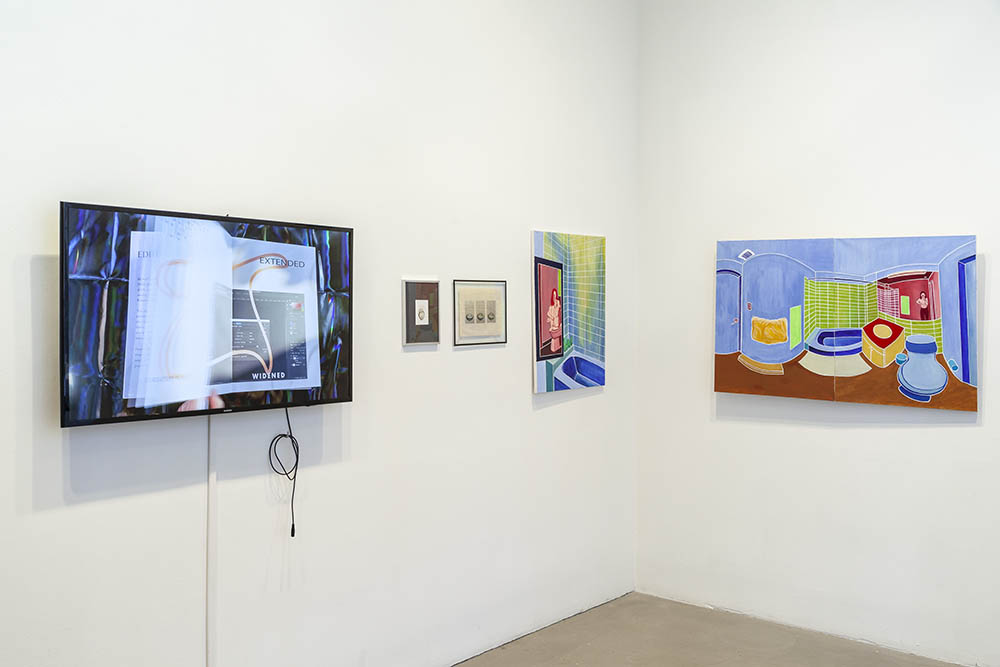
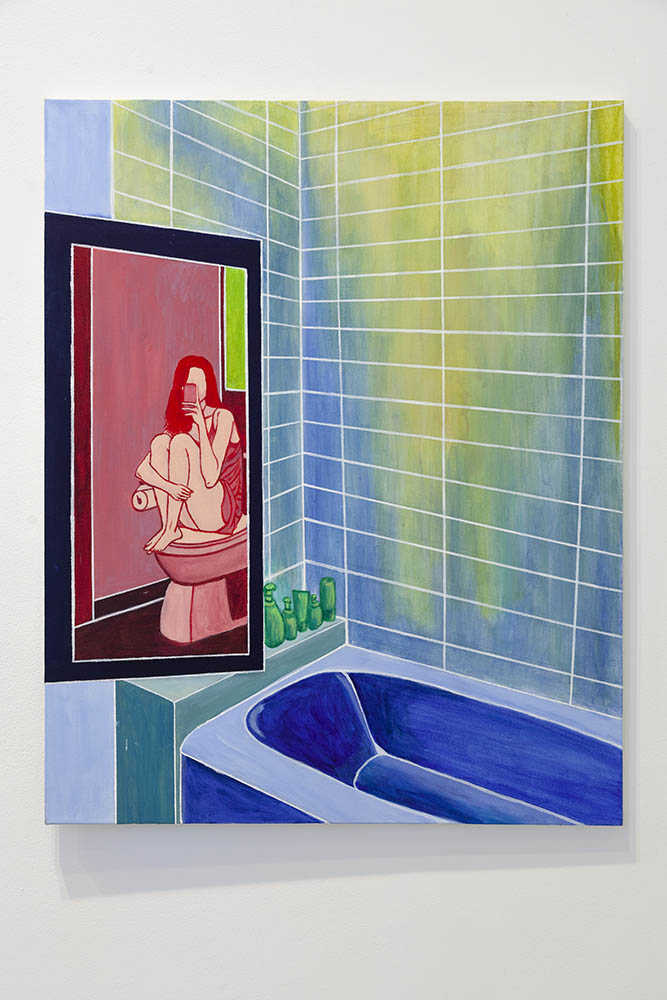
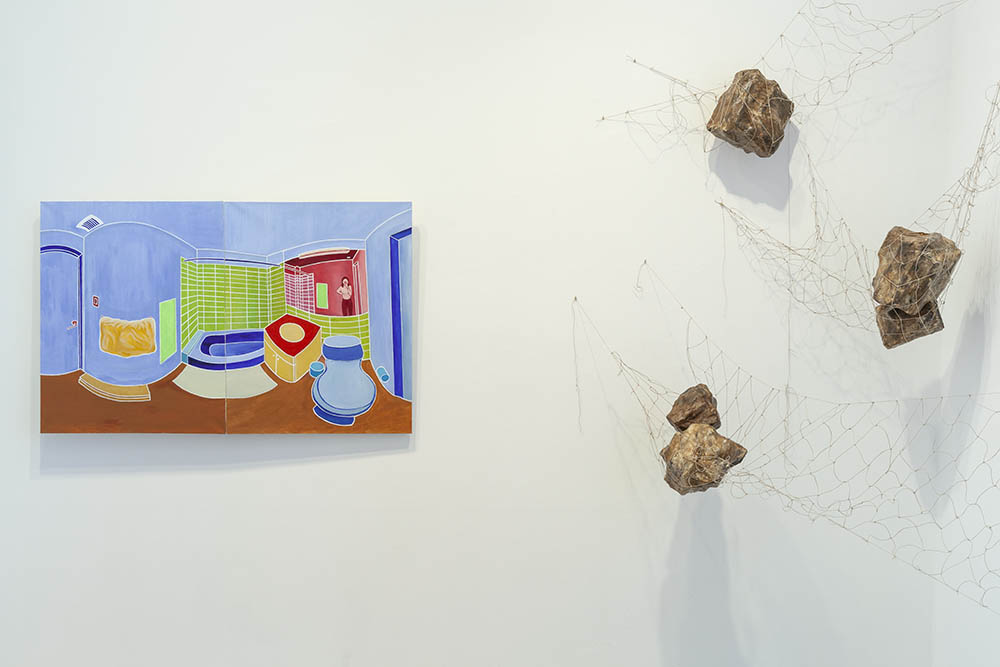



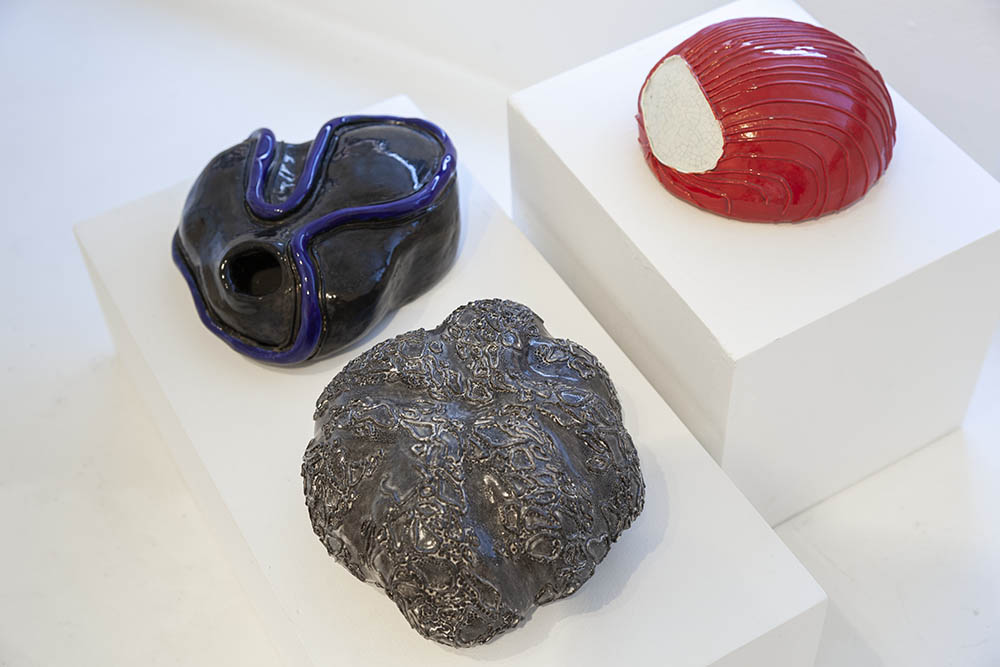

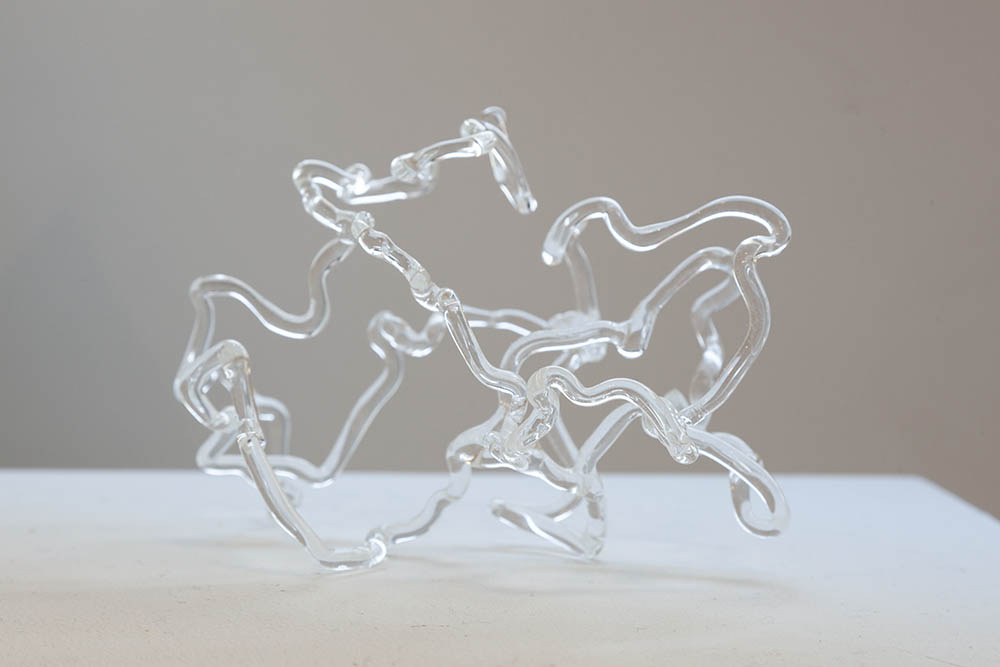
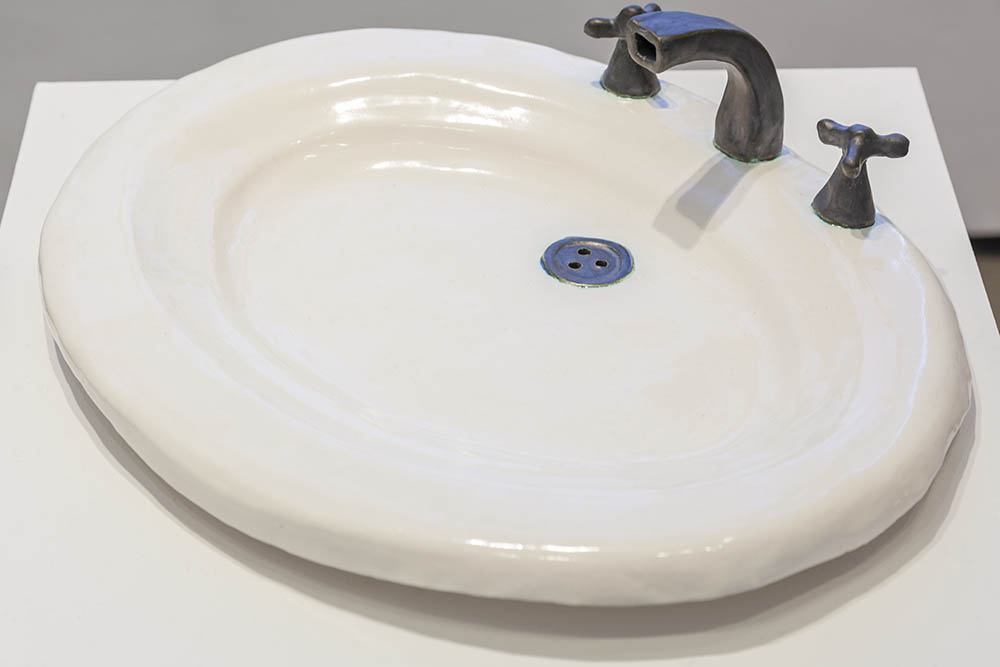
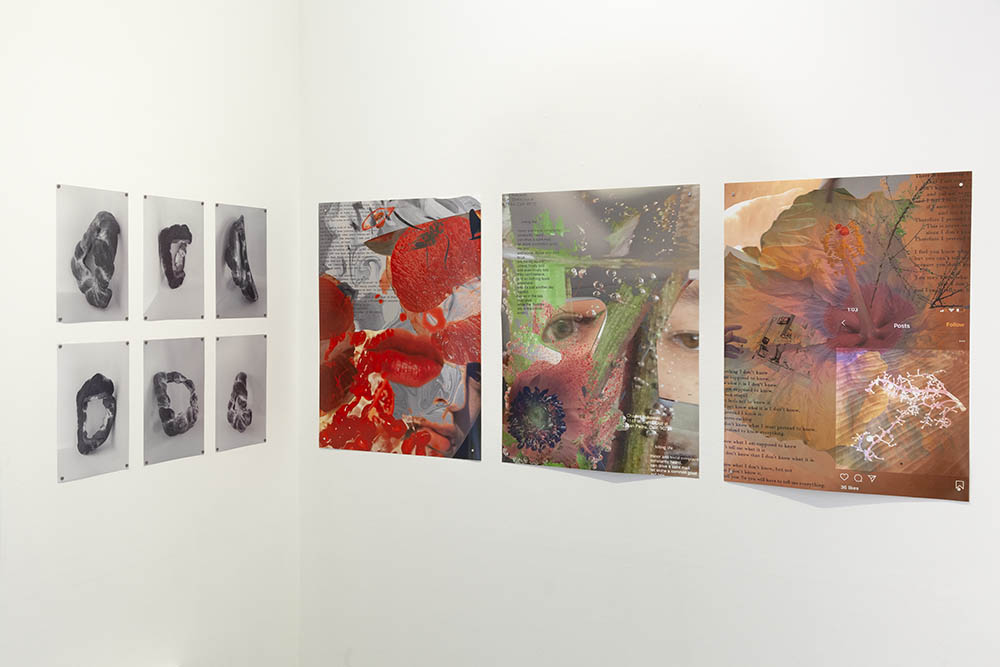
The perceived boundary between our bodies and the outside world is fundamental to our understanding of selfhood. Vision mediates that experience of the body as a self-contained entity: our gaze emanates
outward, fixing our bodies at the center of perceived reality. Similar to the way the Cartesian grid schematizes boundless space from a single origin point, one-point perspective creates a carefully ordered
reality in which to see is to know, and to know completely. Touch, however, resists this visual hierarchy. Instead of emanating from one point on the human frame, like vision does, touch is commensurate with the body as a whole: the scalp, the small of the back, and the sole of the foot are all keyed to haptic experience. And while our eyes survey an entire vista at a remove, to touch something or someone is always to be touched in return. The Intersubjective World explores what it means to disorder the integration of vision, space, and self, and instead to privilege a fragmentary, relational experience through careful attention to surfaces, textures, and objects.
Oona Bebout approaches all of her work with a sculptor’s attention to volume and space. Thus, her intimately-scaled drawings and the quiescent yet discomfiting painting Harvest transcend their two-dimensionality, prompting an imagined caress of their attractive surfaces and enigmatic forms. Meanwhile, the pristine glossiness of Nest (If I Were Small) scrambles our haptic expectations: organic lines twist together to create a delicate jumble, yet they are improbably wrought of transparent glass rather than the homey twigs, fluff, or yarn the title evokes. Like the proverbial Surrealist “chance encounter of a sewing machine and an umbrella on an operating table,” this tension between frigid, unyielding glass and the comfortable warmth of nests shocks our haptic sensibilities awake.
Yinan (Rebecca) Chen creates fugitive portrayals of a woman, alone in her home, engaged in everyday rituals. The fragmentation of space and Chen’s keen sense of pattern make these banal moments sublime while also foiling our visual access to the interiors and the women who occupy them. Mirrors and bathrooms become a kind of proscenium for self-examination and documentation, yet the view they offer is always partial. Our visual access to the subject is interrupted by the intermediaries of the mirror, the camera, and the surface of the canvas itself. In her graphic design practice and video works, Chen further complicates the relationship between the body, interiority, and objecthood as faces and bodies fragment into biomorphic shapes of pillowy skin, transgressing the boundary between embodied “reality” and the virtual.
In the wake of the coronavirus attenuating our opportunities for embodied experience, Chen and Bebout’s challenges to the primacy of the visual explore how our senses order understanding and intimacy. The virus itself has undermined the comforting illusion that our bodies operate in isolation from the outside world: rather, selfhood is contingent and always relational. Meanwhile, the opportunity to think through touch and material space provides a powerful function for a world stripped of collective, embodied experience.
Download the catalog entry for The Intersubjective World [PDF].